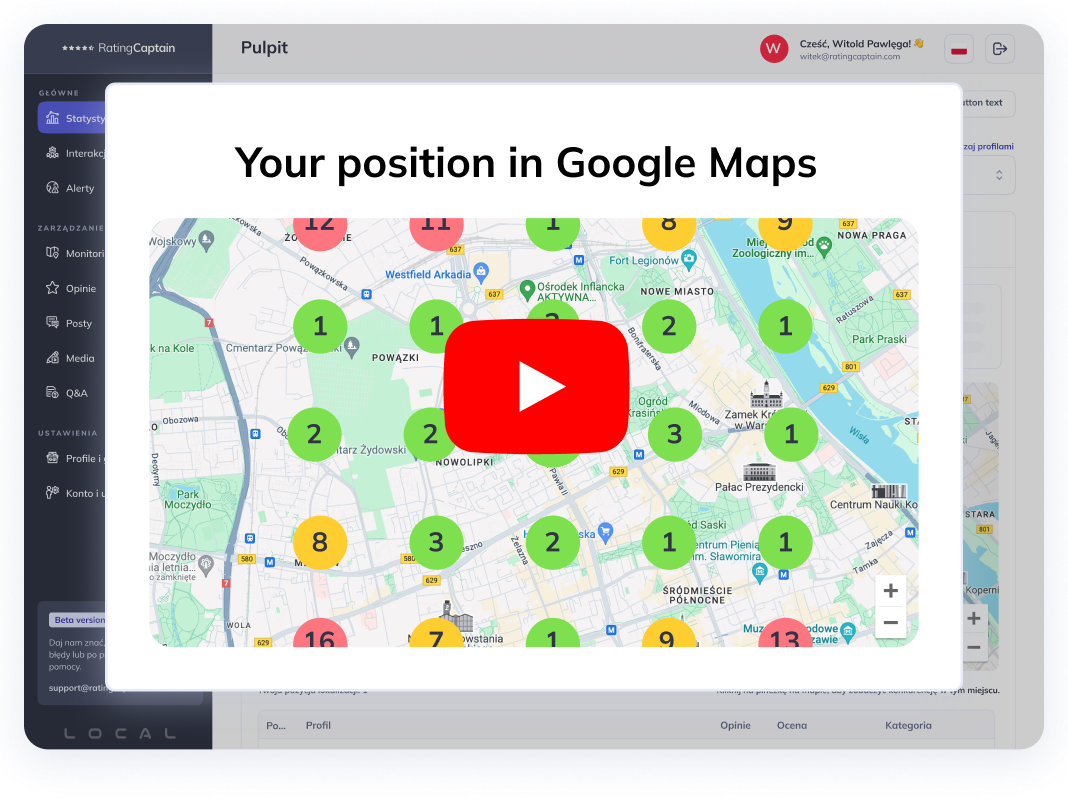

Competitor analysis - how to conduct a competition study?

Table of contents
Competitor analysis in marketing is one of the key elements of business and marketing strategies for companies. In today's competitive environment, it is important for entrepreneurs to know the strengths and weaknesses of their competitors in the market, as well as their marketing strategies. This allows the company to develop an effective marketing strategy that will attract more customers and increase profits.
What is competitor analysis?
Analiza competition is the study of competitors who operate in the same market as our company. As part of competitor analysis in marketing, the company examines its market rivals, their products, prices, promotions, marketing strategies, social media presence, and other aspects related to their activities. Conducting competitor analysis allows the company to understand its position in the market and develop an effective marketing strategy that will give it an advantage over the competition.
The goal of competitor analysis is to identify the strengths and weaknesses of competitors and determine one's own position in the market compared to other market participants. This analysis helps identify opportunities and threats posed by the markets in which we operate. Competitor analysis also allows us to learn about industry trends and monitor the actions of our rivals.

How to conduct competitor analysis?
Conducting competitor analysis consists of several stages, including studying the competition, analyzing competitors' websites, analyzing the keywords used by market rivals, monitoring competitors' activities on social media, and analyzing industry trends. Through competitor analysis, entrepreneurs can understand their position in the market and the opportunities and threats associated with running a business.
Conducting competitor analysis requires the use of appropriate tools, such as SEMrush or SWOT analysis. It is also important to gather information directly from market participants to avoid improperly conducted analysis, which can lead to costly mistakes at the very beginning of business operations.
Stages of competitor analysis in marketing
There are various methods of competitor analysis, but four main stages can be distinguished:
1. Identifying competitors: The first step in competitor analysis is identifying the main competitors of the company. This can be done through market research, interviews with customers, online surveys, etc.
2. Collecting data about competitors: Next, it is necessary to gather data about competitors, such as their business models, product/service offerings, prices, marketing and distribution strategies, brand strength, etc. This information can be collected through online research, financial analysis, on-site observations, market research, and other sources of information.
3. Analyzing data about competitors: After collecting information about competitors, it is important to analyze this data to understand their strengths, weaknesses, and strategies. This allows us to determine the key success factors in the industry and how the company can effectively compete.
4. Conclusions and actions: Based on competitor analysis, the company can draw conclusions and take actions to better compete in the market. This may involve changes in product/service offerings, marketing strategies, pricing policies, product and service improvements, etc.
At each stage of competitor analysis, understanding the company's goals and the necessary information to achieve those goals is crucial.

Summary
We now know how important competitor analysis is for any company that wants to operate effectively in the market and achieve success in marketing activities. Understanding our competitors and industry trends allows us to gather a wealth of information, which facilitates making informed business decisions.
Studying the competition as part of a marketing strategy is one of the key elements of market analysis, as it allows us to identify the strengths and weaknesses of competitors, as well as determine our own position in the market. Competitor analysis helps achieve success in the market. Carefully observing and drawing conclusions from competitors' online activities facilitates gaining an advantage over competitors and, consequently, increasing profits.
Please rate this article
Local SEO tool
for agencies
Automate your local SEO
and track Google Maps visibility

